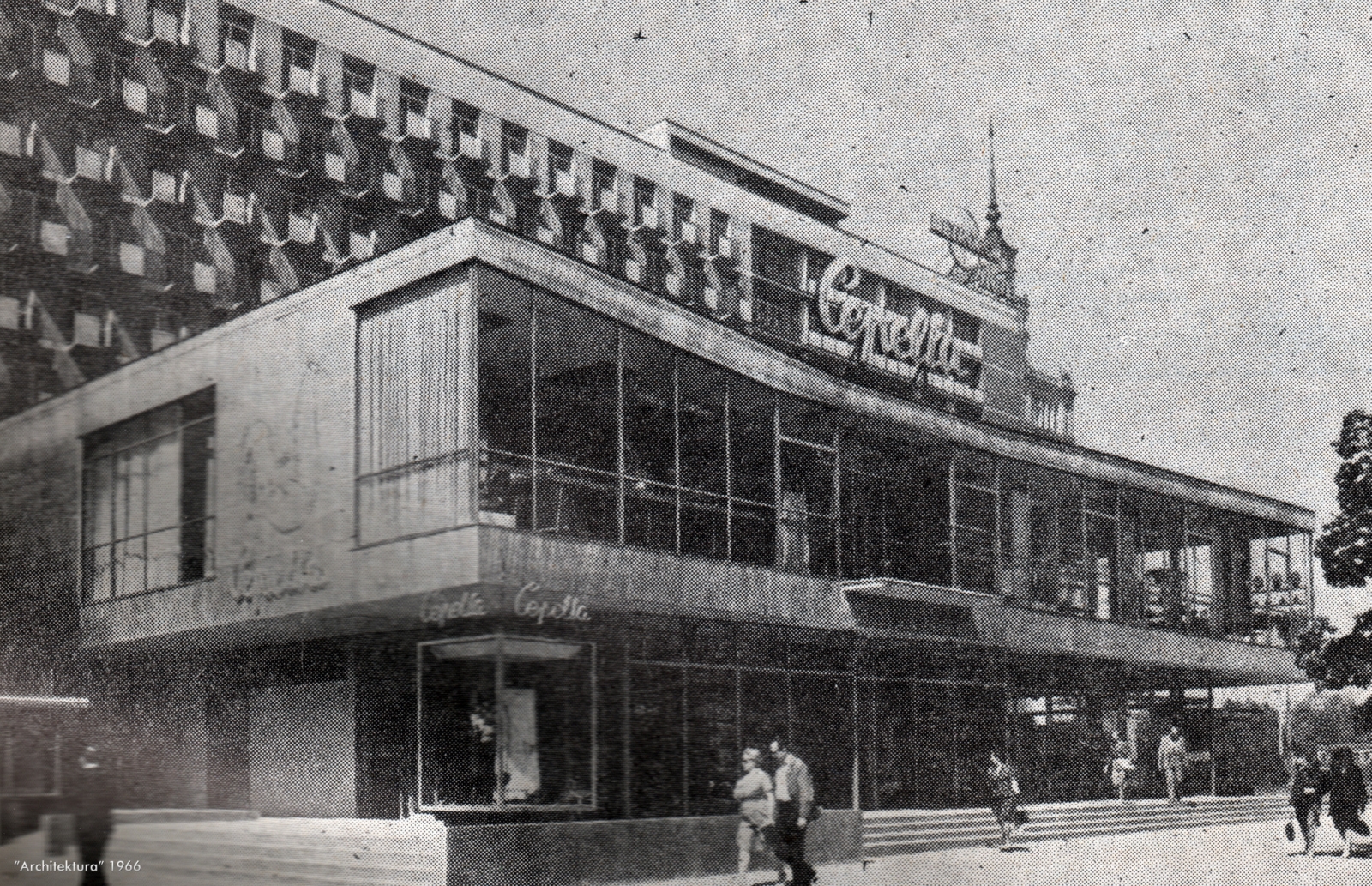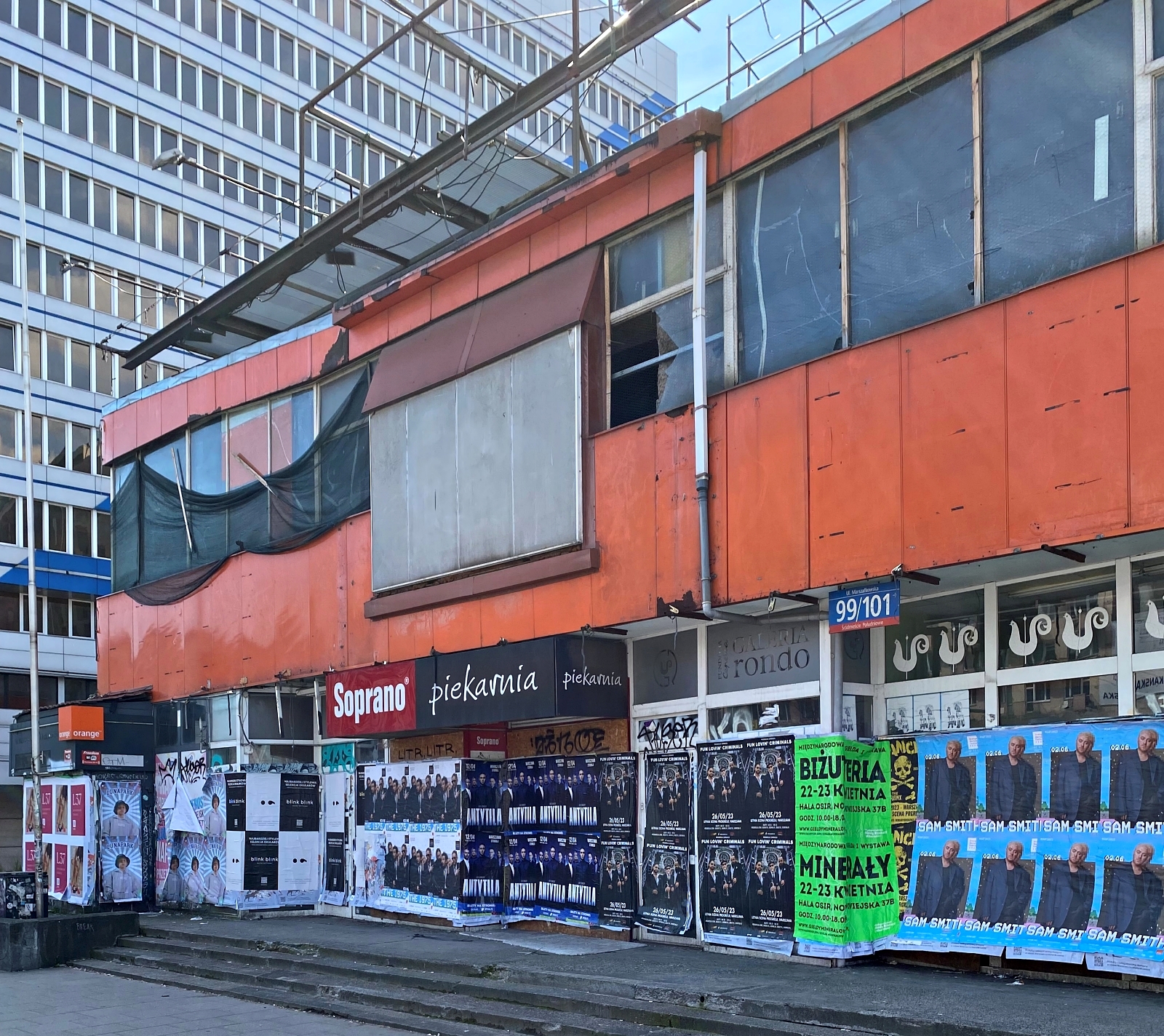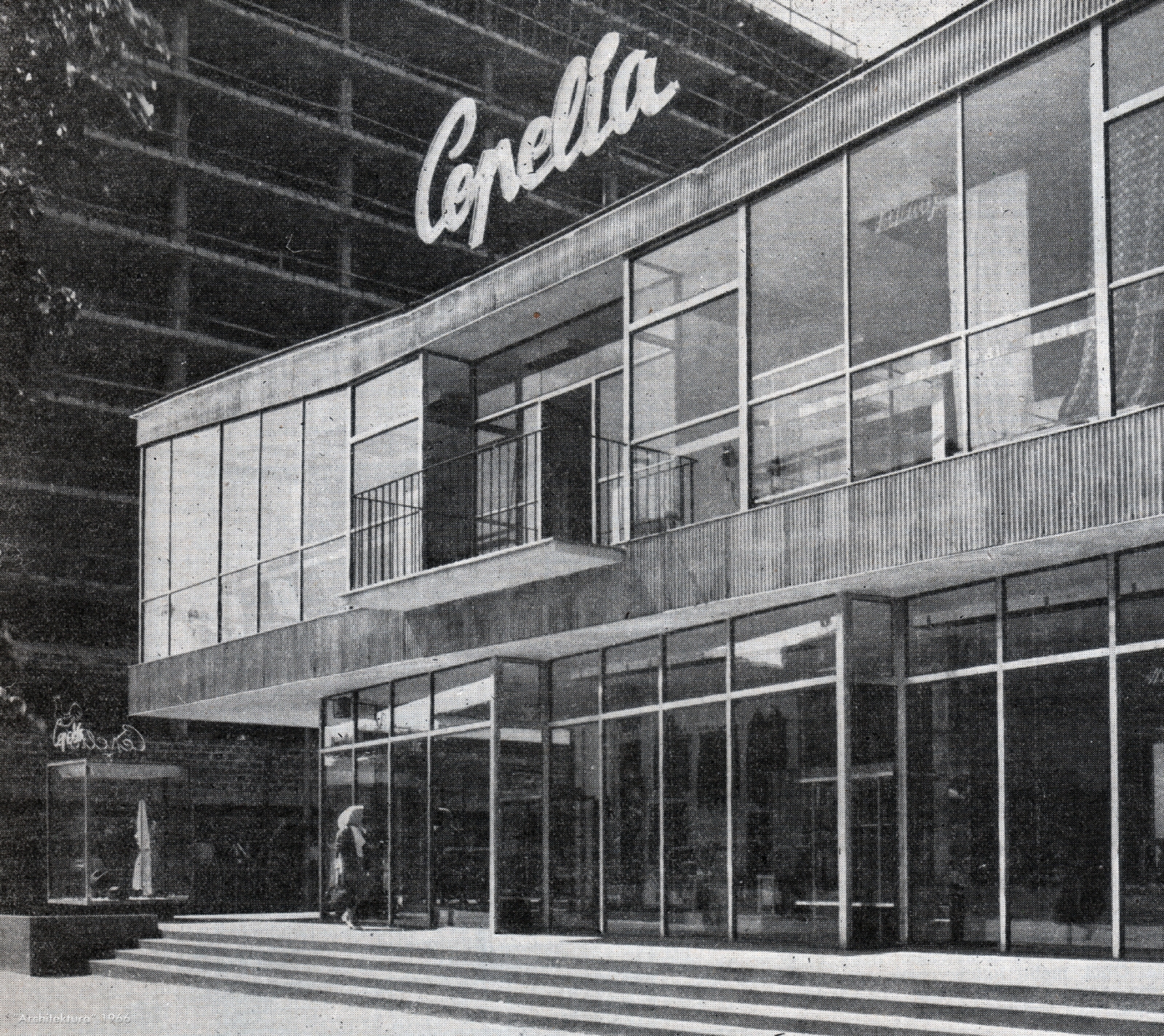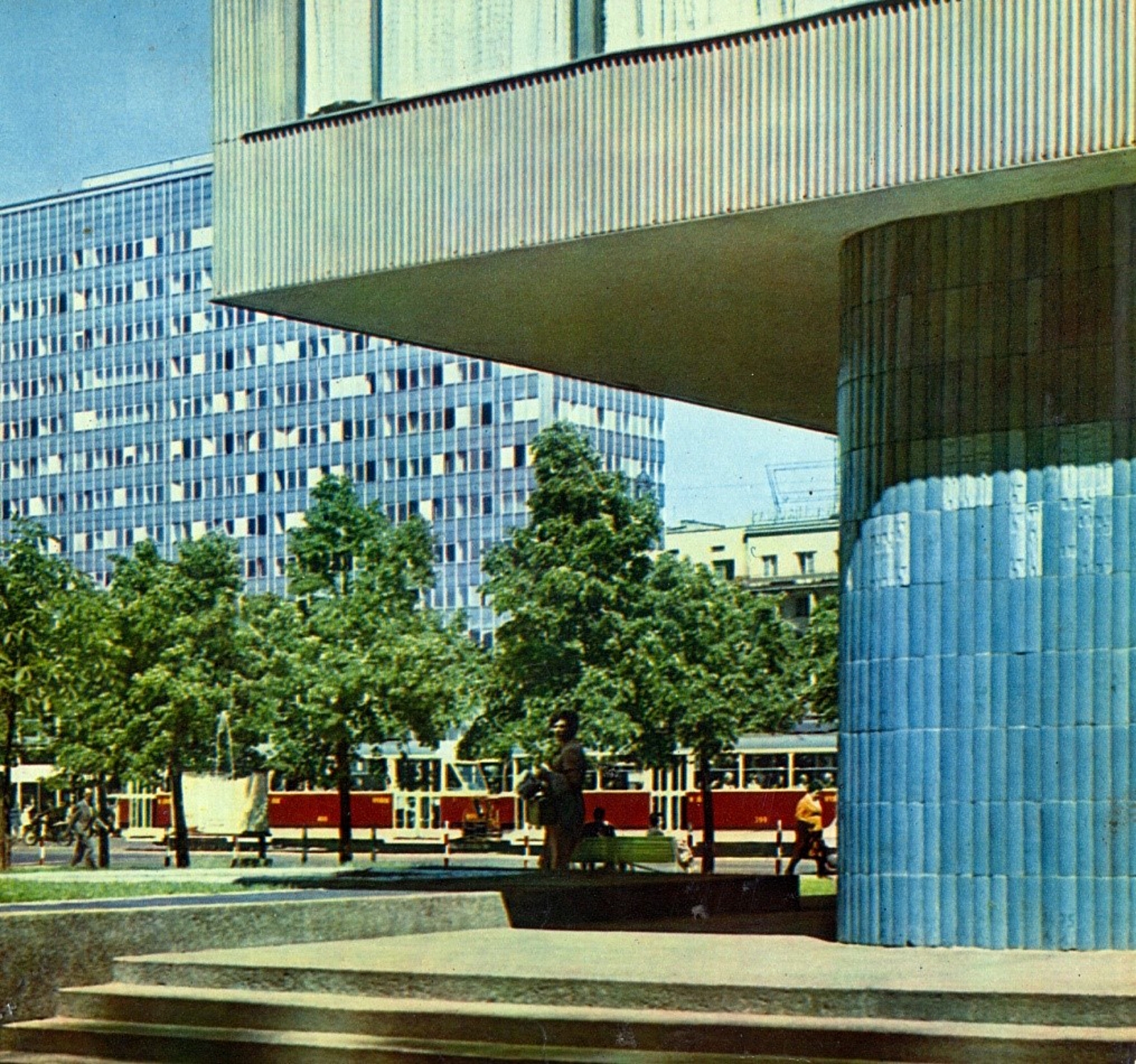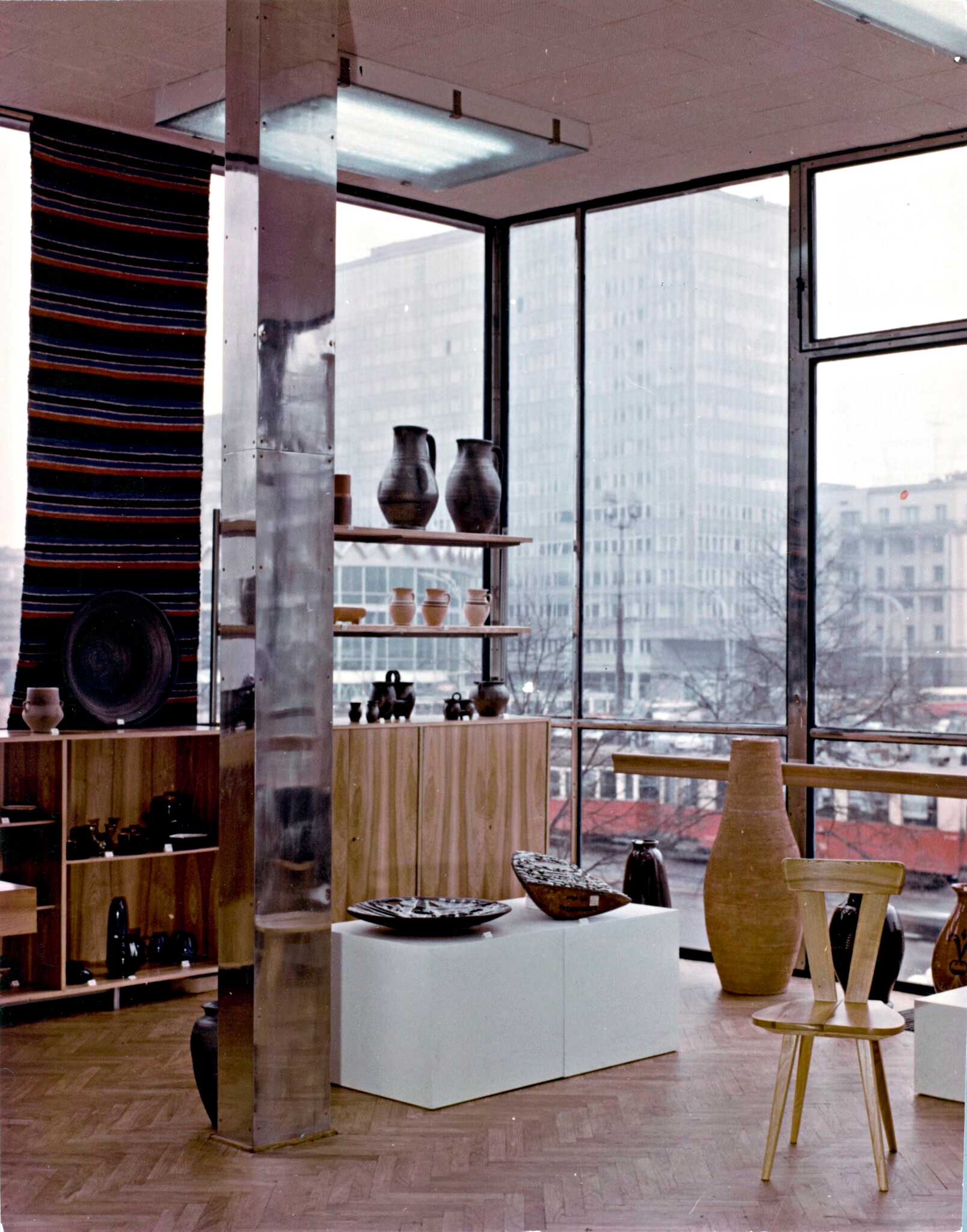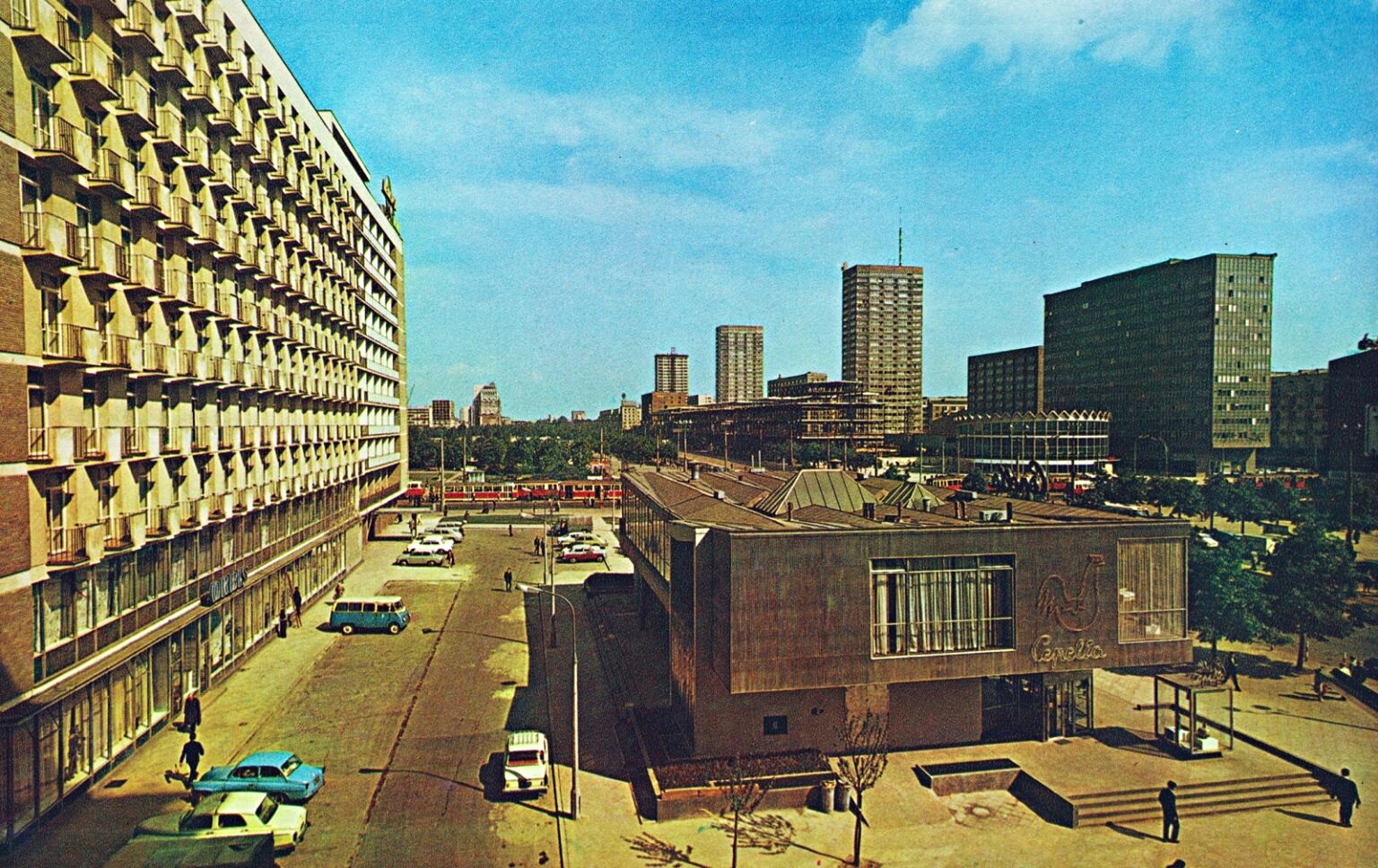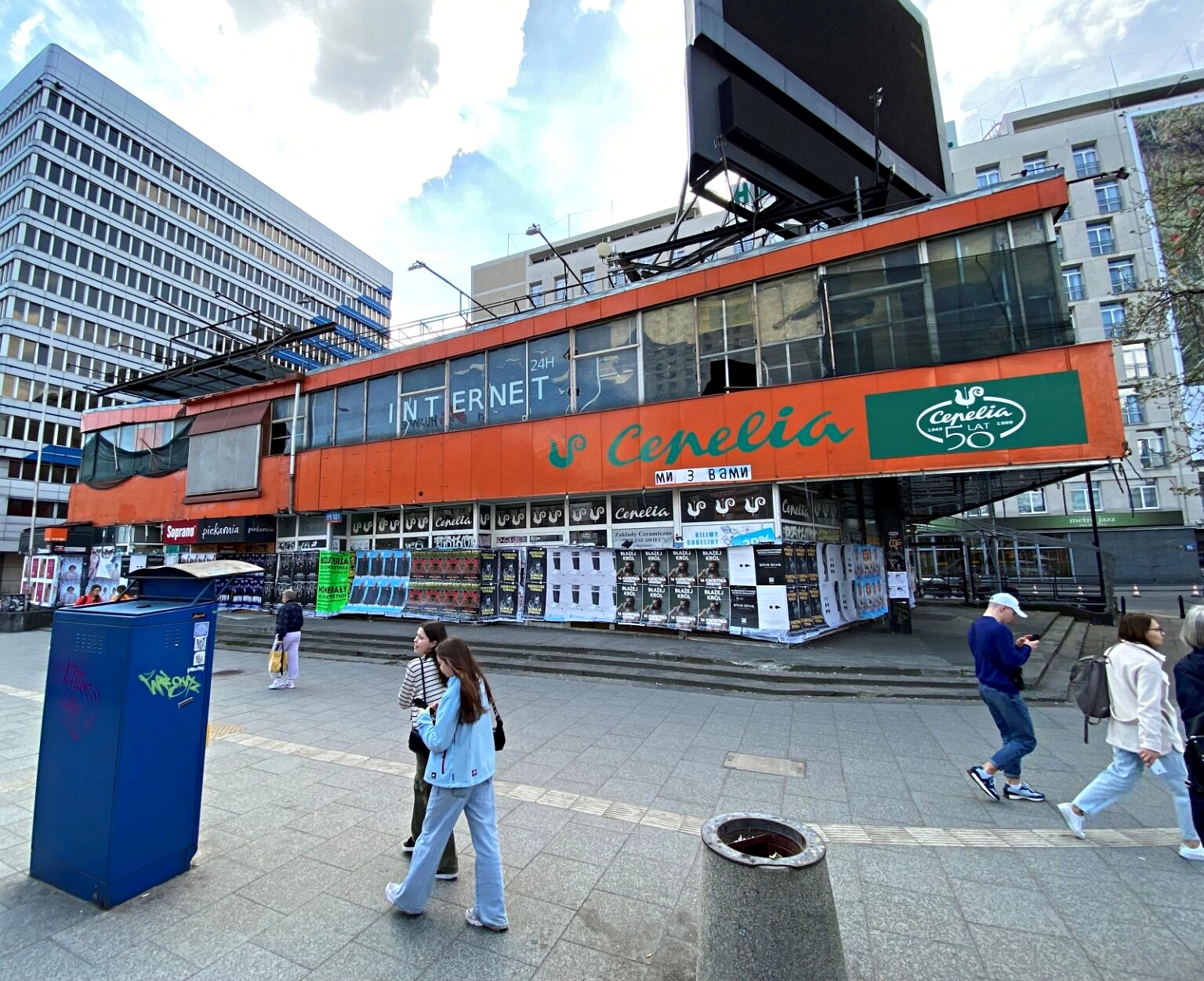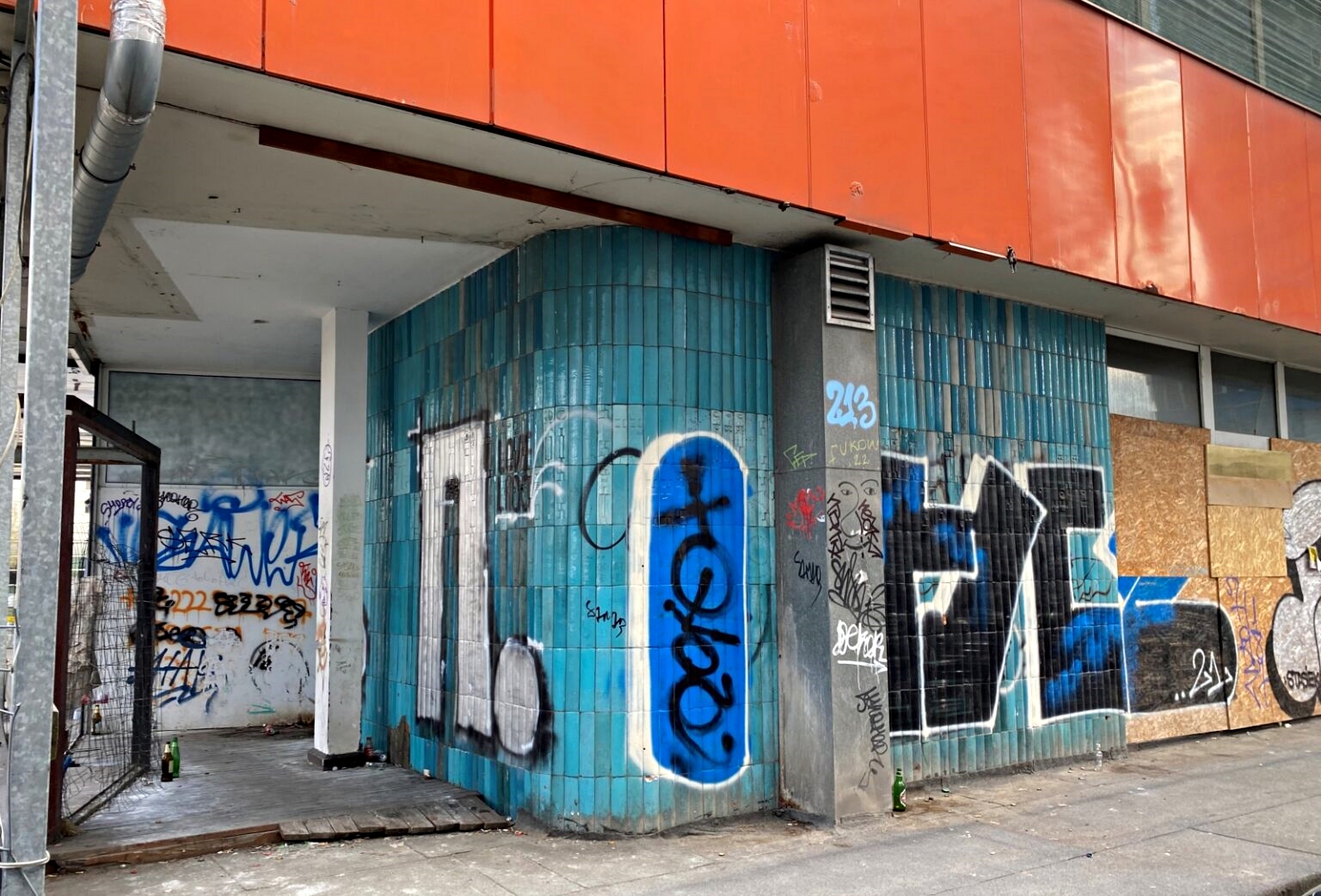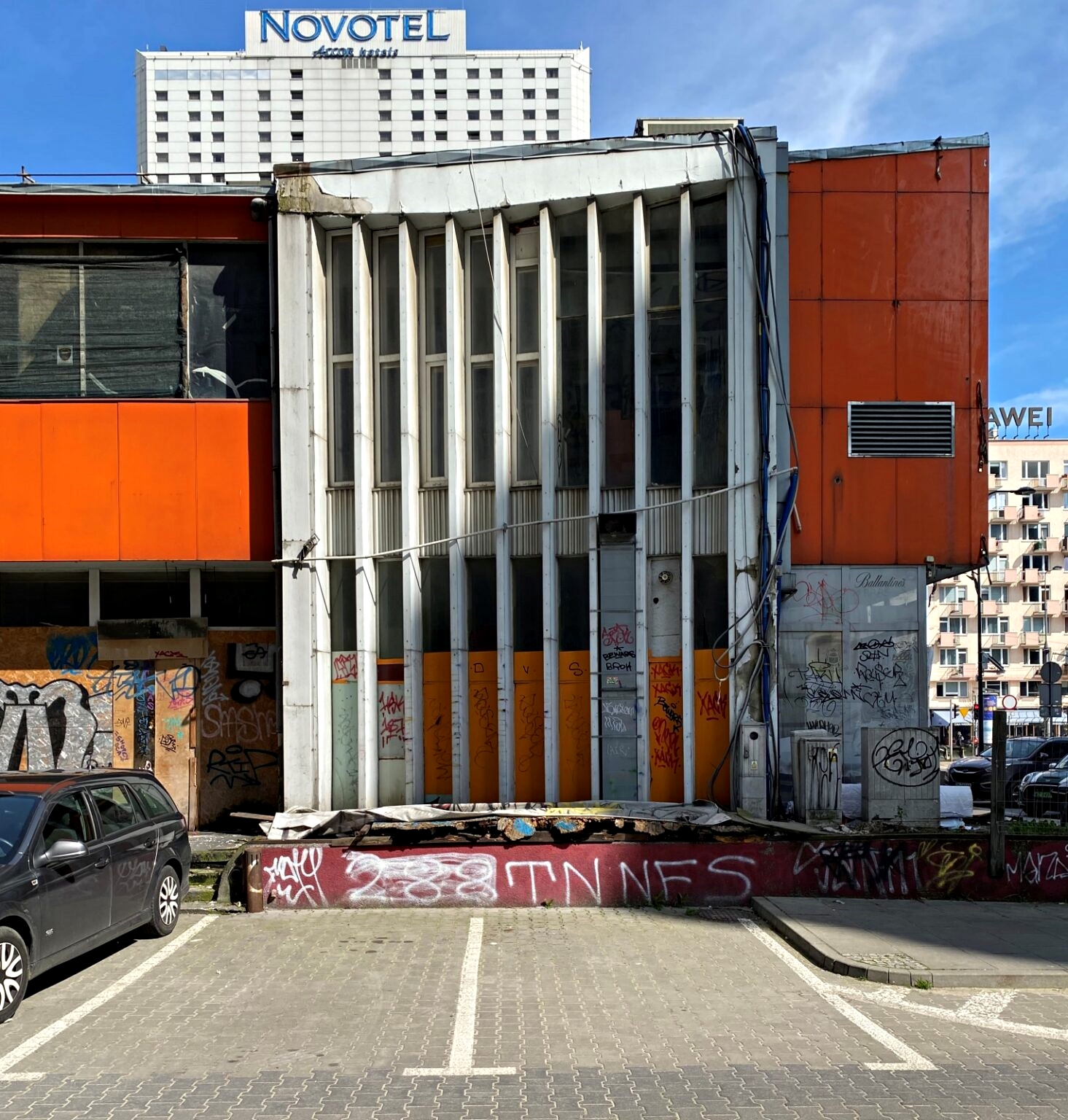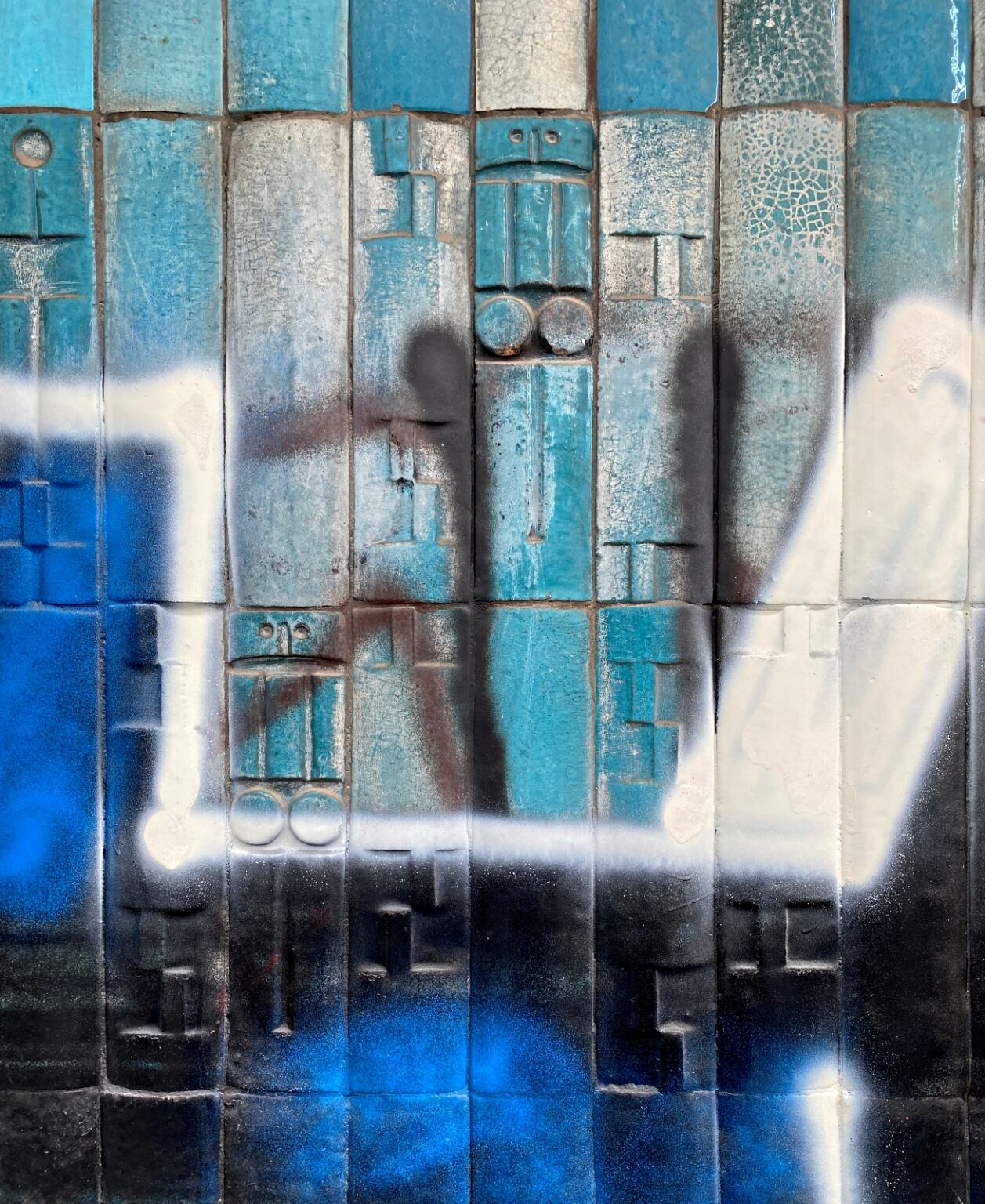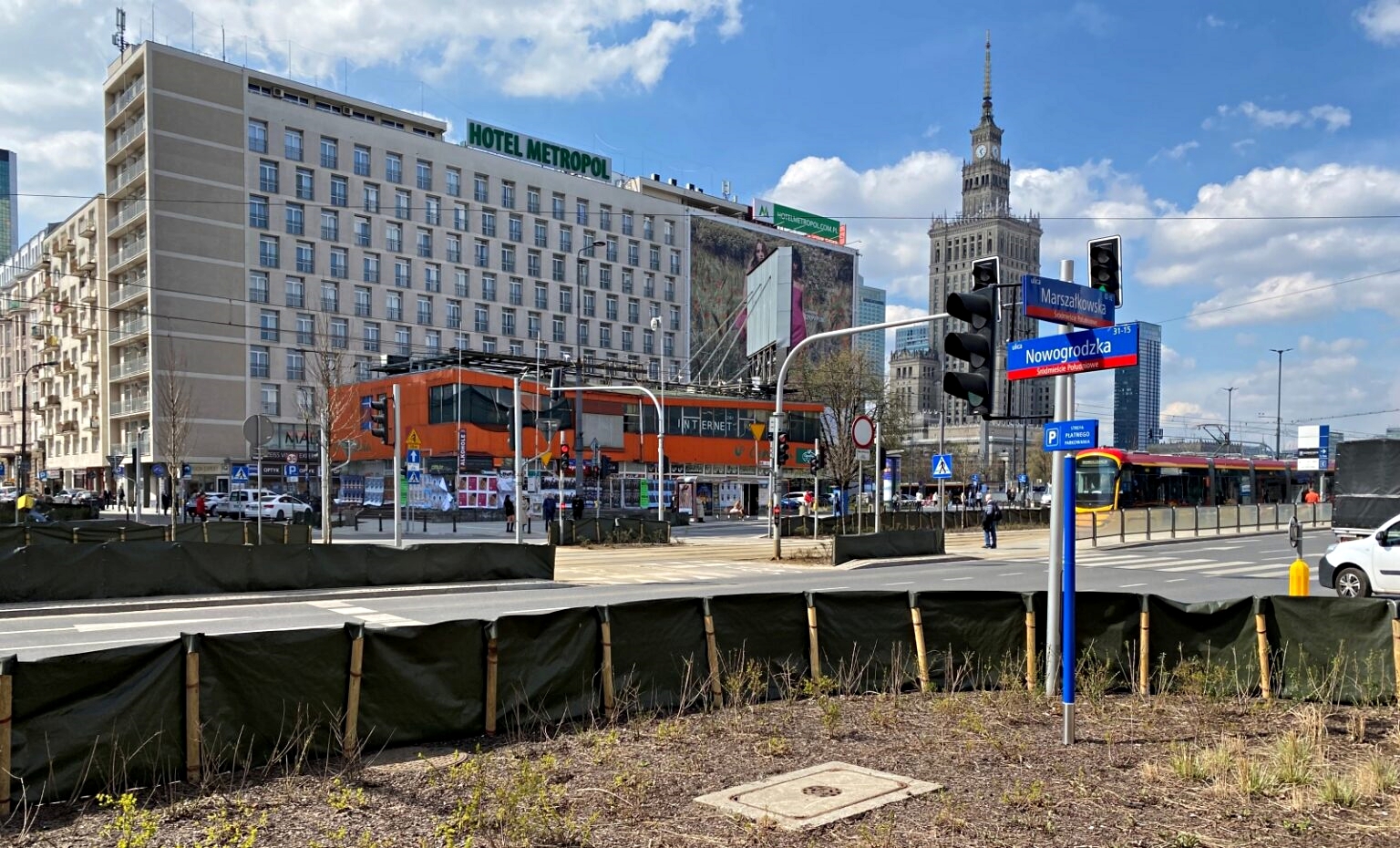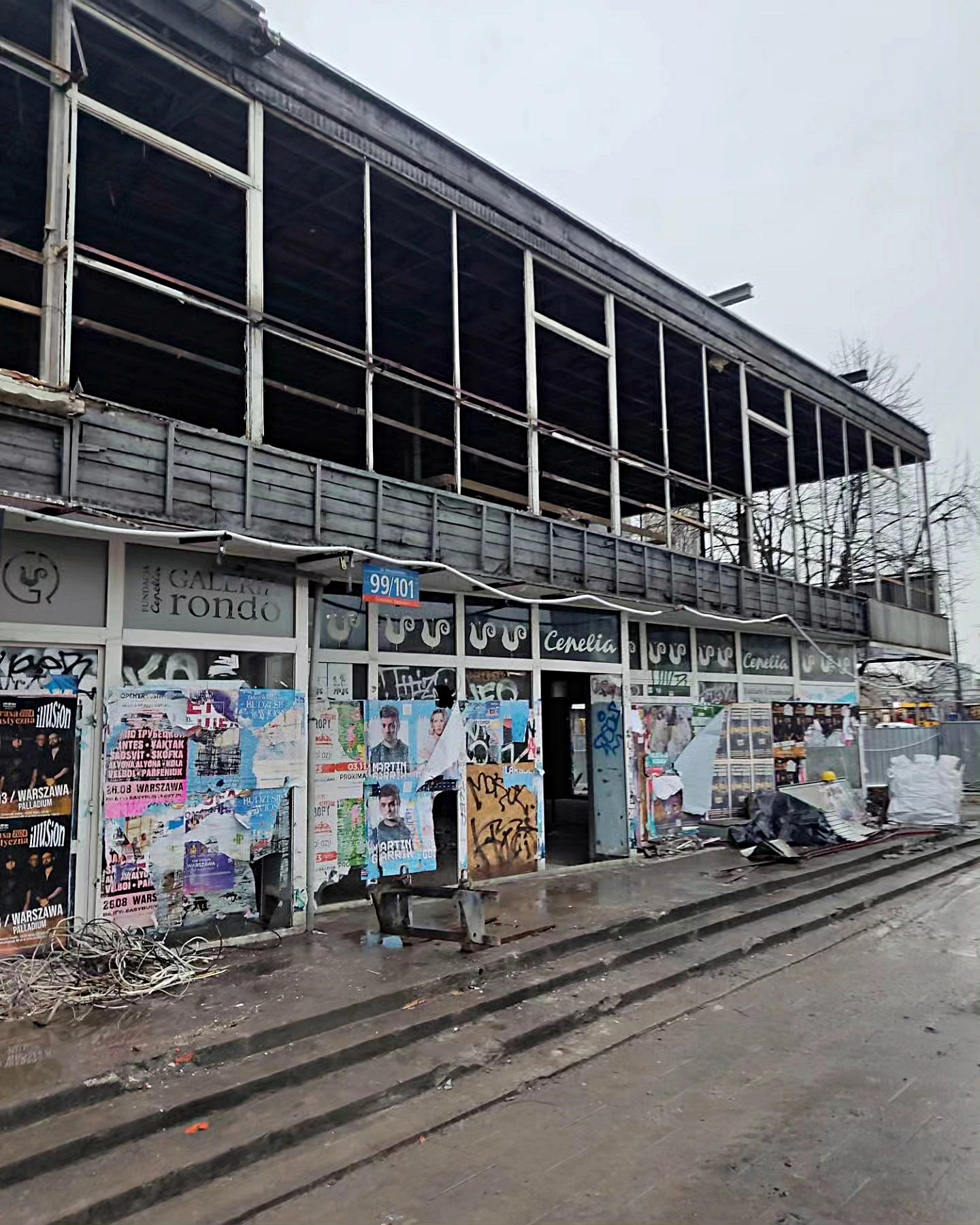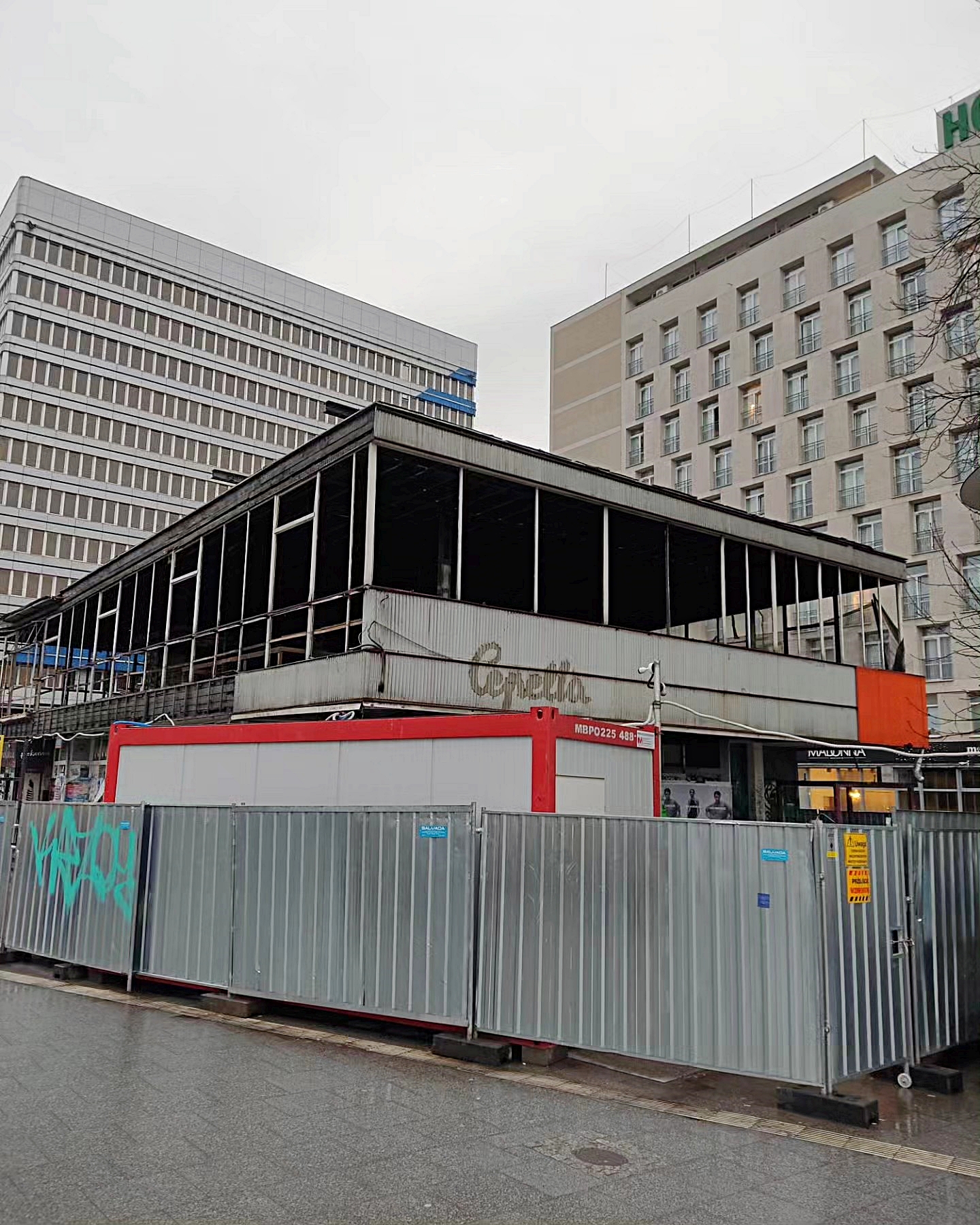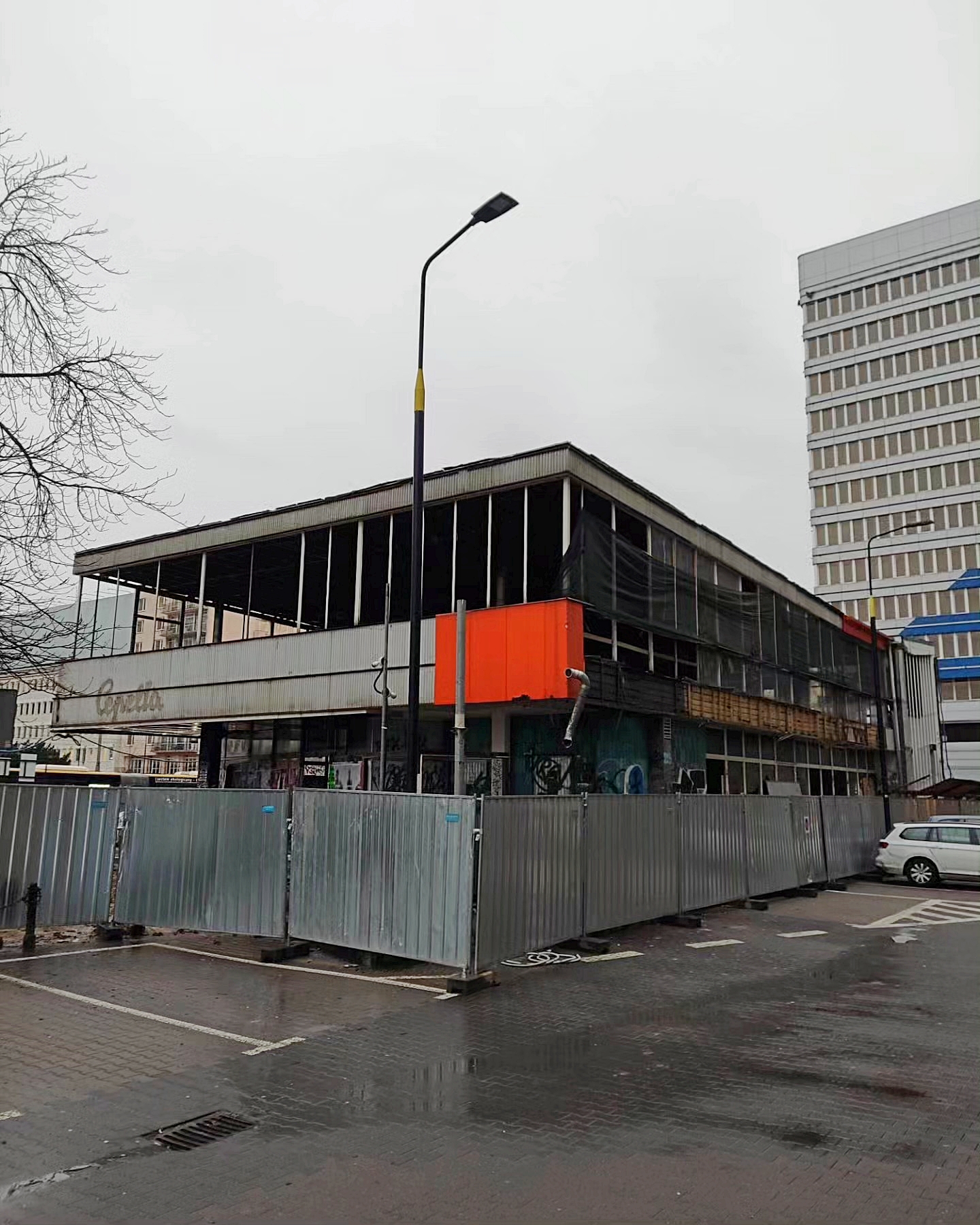The Cepelia pavilion is one of the icons of Warsaw modernism. Unfortunately, for years it had no luck as far as renovation was concerned and for years the building haunted one of the busiest roundabouts in the capital. The object’s situation changed at the end of January this year, when the building was imperceptibly fenced off and the dismantling of all the clutter and advertisements that had blurred the pavilion’s former qualities began. The owner has now embarked on a long-awaited renovation that will see the building regain its original 1960s appearance and once again become a place of commerce.
There was already an ambitious plan to convert the building into a fast-food outlet, but the conservation officer vetoed it on the grounds that it would “significantly interfere with the historic fabric of the monument”. This is because the recommendations state that only commercial premises can be located in Cepelia. The building could not, therefore, serve a catering function. At the end of January 2024, however, there was a breakthrough. The Mazovian Provincial Conservator of Monuments ordered the company Sienna 111, which owns the building, to carry out conservation and construction work immediately.
The Cepelia pavilion after the removal of the secondary cladding. Photo: Michał Trawiński/Tubyło, tu stać
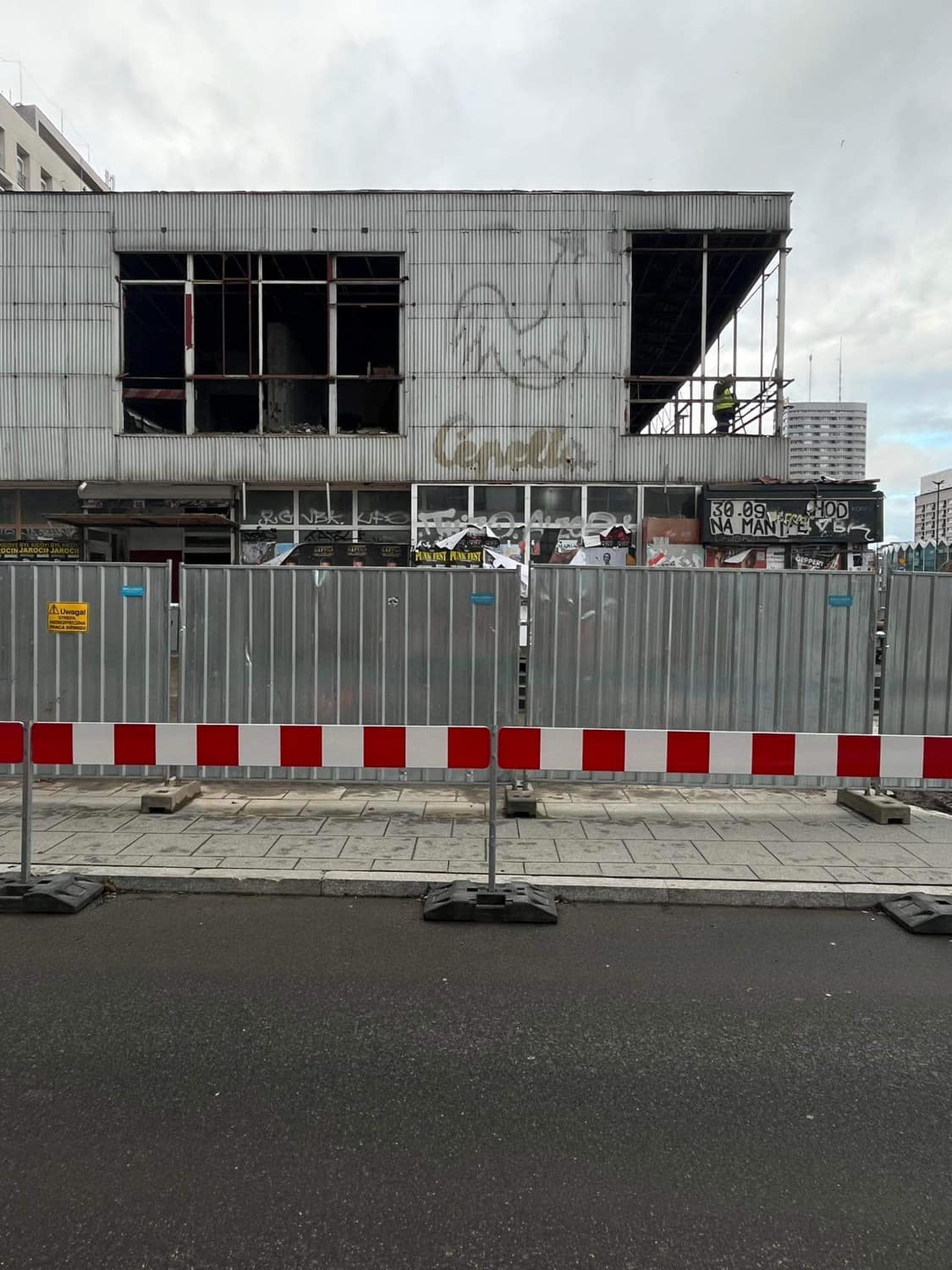
The building was erected in 1966 to a design by architect Zygmunt Stępiński, in collaboration with Andrzej Milewski and engineer Aleksander Haweman, in the vicinity of the Marszałkowska Street housing and commercial development under construction at the same time. The three-storey building was constructed using a steel-aluminium structure and large expanses of glazing. The unglazed part of the façade, now visible from the Metropol Hotel, was covered with hand-fired ceramic tiles in turquoise by Stanisław Kucharski. The building housed the main exhibition and trade showroom of Cepelia in Warsaw. It is worth recalling that during the communist era, Cepelia (Centrala Przemysłu Ludowego i Artystycznego) was a central association of handicraft cooperatives, which ran trading outlets selling goods produced in associated cooperatives, made or inspired by the work of Polish folk artists. It existed between 1949 and 1990.
Cepelia in 1966 and 2023. Source: Collections – bonczek/hydroforgroup and whiteMAD/Mateusz Markowski
1967 and 2023: View of Marszałkowska Street from behind the Cepelia building. Photo from the book “Warsaw. Landscape and architecture”, published by Arkady 1970. Source: fotopolska.eu/Krzysiek99 i whiteMAD/Mateusz Markowski
Until now, the monument was haunted by walls covered with posters and graffiti and windows boarded up with dicta. Recent work has exposed the former façade of the pavilion with traces of distinctive signs visible. The renovation, with elements of reconstruction, aims, among other things, to restore the pavilion’s original dimensions and architectural qualities and to partially restore the original landscaping around the building (there were two flower beds and a fountain). The work is expected to be completed by the end of 2024.
Will a modernist gem really return to the Warsaw landscape? We are following the situation and keeping our fingers firmly crossed for this.
Source: ABC Warszawy(facebook, instagram) warszawa.naszemiasto.pl, muratorplus.pl
Read also: Modernism | Warsaw | Architecture in Poland | Facade| Curiosities| whiteMAD on Instagram

